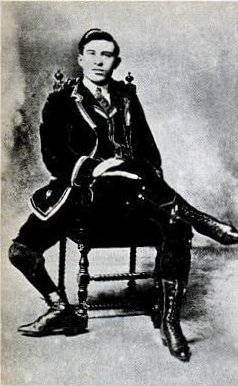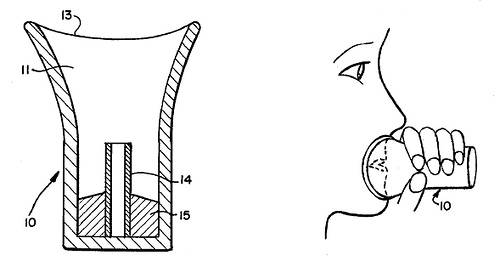mouton enragé
n. a normally peaceful person who has become suddenly enraged or violent
Literally, “angry sheep.”
mouton enragé
n. a normally peaceful person who has become suddenly enraged or violent
Literally, “angry sheep.”

It’s somehow appropriate that Francesco Lentini was born in Italy, “the boot of Europe.” He had three legs, four feet, and 16 toes — his third leg had a rudimentary foot growing from the knee.
When doctors determined they couldn’t safely remove the extra parts, Lentini moved to the United States and made a career kicking soccer balls in sideshows. Eventually he married and raised four children.
He died in 1966 at age 77, setting a record as the longest-lived man with three legs.
At five o’clock in the afternoon of October 19th, 1874, an immense concourse of people assembled in the city of Cincinnati, Ohio, to witness the ascent of a bride and bridegroom in a balloon to be married in the air by a clergyman who ascended with them, and delivered an address to the crowd before the machine was set free. The couple were horse-riders in a circus, and the idea was, no doubt, that of combining business with pleasure, since hundreds would be curious to see them in the circus after their marriage, who, before that remarkable event took place, would only regard them with the ordinary amount of curiosity due to their skill as riders.
— The World of Wonders, 1883
Samuel Johnson’s 1755 dictionary defines garret as “a room on the highest floor of the house.”
It defines cockloft as “the room over the garret.”

Julia Moore’s poetry was so bad that it gained a national following even among her contemporaries in the 1870s. One reviewer wrote, “Shakespeare, could he read it, would be glad that he was dead”:
They once did live at Edgerton,
They once did live at Muskegon,
From there they went to Chicago,
Which proved their fatal overthrow.
It was William House’s family,
As fine a family as you see—
His family was eleven in all,
I do not think it was very small.
She stopped writing when she saw that her fans were laughing, not weeping — and, immortally, she closed her career with these lines:
And now kind friends, what I have wrote
I hope you will pass o’er,
And not criticise as some have done
Hitherto herebefore.
“We used to have a dog named Snoopy, you know, a real live dog. I suppose people who love Snoopy won’t like it, but we gave him away. He fought with other dogs, so we traded him in for a load of gravel.” — Charles M. Schulz

In 1983, Monya Scully invented a “sound muffling cup into which an enraged person can shout to release tension while avoiding disturbing other persons.”
We don’t know much about Scully, but the patent abstract seems to tell a story: “It is a fact of life that many people in a state of anger shout, often at children, a spouse, a dog, etc. with the motivation being not to communicate, but rather mere anger. … The use of the cup may result in avoidance of embarrassment as is experienced by many after having disturbed others by shouting in a fit of anger.”
The sermons of London theologian Frederick Denison Maurice (1805-1872) were always received with rapt concentration. Alas, there was a reason:
“Listening to him,” wrote Aubrey de Vere, “was like eating pea soup with a fork.”
One of the carriers of a New York paper, called the Advocate, having become indisposed, his son took his place; but not knowing the subscribers he was to supply, he took for his guide a dog which had usually attended his father. The animal trotted on ahead of the boy, and stopped at every door where the paper was in use to be left, without making a single omission or mistake.
— The Scrap Book, Or, A Selection of Interesting and Authentic Anecdotes, 1825